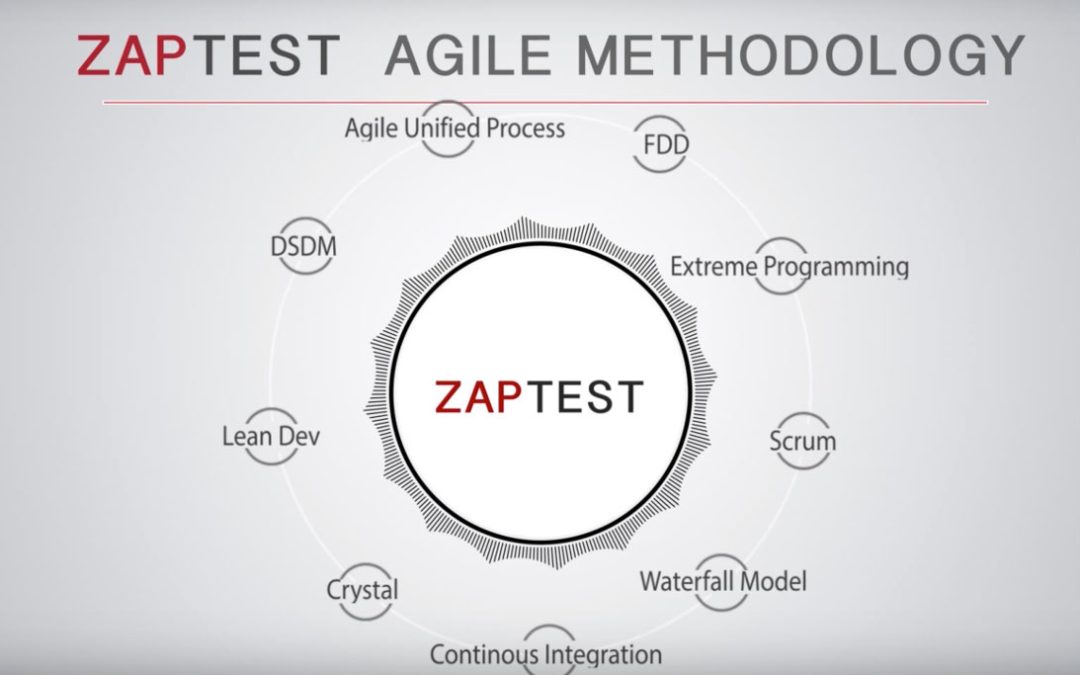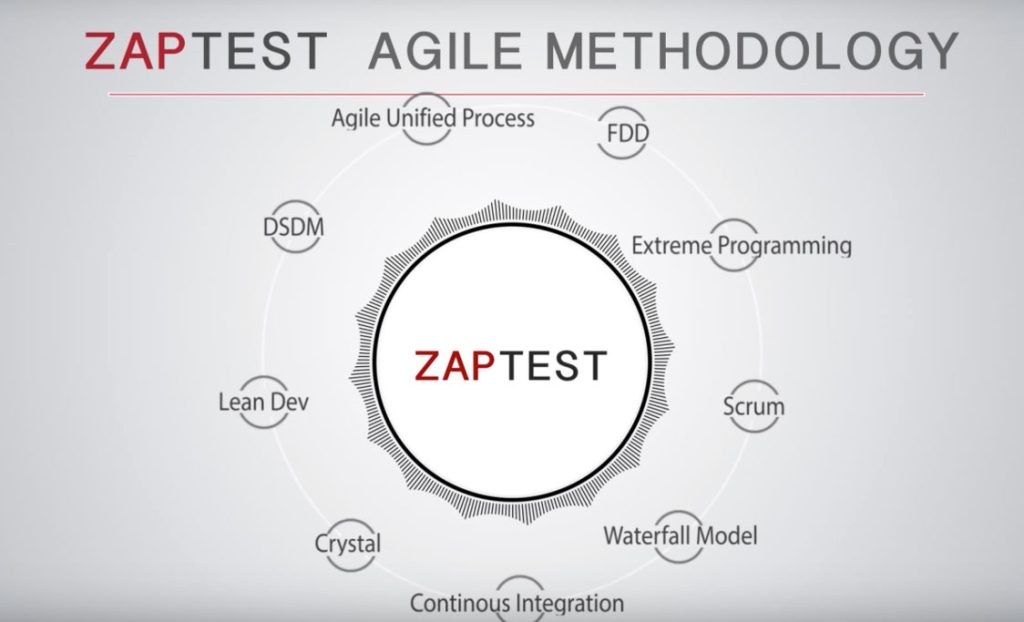When it comes to agile software development, testing is critical to ensuring the software is ready for production. But what is agile methodology in testing? The agile testing methodology vs. the waterfall methodology has substantial conceptual differences.
Learning how the agile testing life cycle works, methods, agile software testing tools, and how to implement them are all essential factors to perform this type of testing on software.
Benefits of Agile Software Testing
The ways you can profit thanks to agile software development testing are abundant. There are several key benefits to switching to an agile methodology in the testing process and following agile software testing best practices.
It Saves Time and Money
Many agile tests can be automated, which not only saves you the costs of tests, but it’s much faster than manual testing.
Another way you will save money with agile software testing tools is by eliminating the need for duplicate tests. No matter how efficient your QA testers, manual testing will take more time, so if you want efficient and fast results, agile methodologies will help optimize your software development life cycle.
Reduces Documentation
While agile testing doesn’t eliminate documentation, there is much less of it. Instead of documenting every piece of information, which can be time-consuming, it involves recording specific information concisely to benefit the testing team.
It’s Flexible
One of the best things about agile methodology in testing is how flexible it can be. It’s a highly adaptable testing method that allows you to change anything necessary on a whim to get the solution you need during the testing process.
Agile testing revolves around the collaboration of all team members, so flexibility to change tactics easily is a significant benefit.
Provide Regular Feedback
Unlike traditional testing, which takes upwards of 18 months to get feedback from customers or end-users, agile testing services allow for feedback every few weeks and faster, depending on the situation, stage in the development process, and more.
Of course, the faster the feedback during development the team can make necessary changes and redeploy the software for further customer feedback.
Easier To Identify Issues
Utilizing agile methodology in testing makes it much easier to identify any issues with the product. With regular testing and customer feedback, the testing team can find and correct development issues faster than with traditional testing methods.
Common Challenges With Agile Software Testing
While there are several benefits to using agile software testing, some challenges are worth considering before switching from traditional testing.
There Is a Higher Chance of an Error
One downside to using agile methodology for testing is that errors are more likely to occur. While it is convenient that there is less focus on thorough documentation, losing that very documentation process can sometimes cause more errors to happen or to be overlooked in testing.
New Features Are Added Often
Since agile testing moves rapidly, new product features are added faster than traditional testing. New features can pose a challenge because it leaves testing teams less time to identify developmental issues with previous features before new ones.
The Transition From Traditional to Agile Testing
Transitioning from traditional to agile testing requires thorough consideration. Understanding the main differences between the agile testing methodology vs. waterfall testing methodology can help you better understand which is the better choice for your situation and make the appropriate decision.
What Is Traditional Testing?
Traditional testing, also known as waterfall testing, is more structured than agile testing and is performed incrementally.
All testing occurs at the end of product development, with changes being performed at this stage, following which the testing process re-starts.
This waterfall testing approach allows for all features to be delivered after the implementation phase, all at once. With waterfall testing, most often testers and developers will be working separately, and they will never or rarely directly cross paths.
Within the waterfall testing approach, testers identify errors, and anything and everything is thoroughly documented so testers and developers can refer back to it without missing potentially critical details.
The project manager is ultimately in charge of the project from start to finish, and testers and developers follow predetermined steps to execute the testing process. This top-down approach is easy to follow, as testers can only move to the next phase after fully completing the previous one.
What Is Agile Testing?
Agile testing starts once the development of a project begins. In short, it integrates testing and development at all stages. Most developers think of this process in reference to the agile testing pyramid (more on this later).
Using agile methodology in testing means that testing continuously happens throughout the development process and includes developers, testers, and owners at almost every stage.
With testing starting before the development stage and continuing throughout the agile testing process, feedback is provided at every step. This continuous feedback loop supports the development process because the testing team is not constrained to wait until production to identify where errors may have occurred.
Quality assurance is now implemented into the agile testing services. Every member of the agile testing team is responsible for identifying potential issues via concise documentation and coming up with solutions.
Agile Testing vs. Waterfall Testing
Agile testing methodology vs. waterfall is simple to understand. First, traditional testing follows fixed requirements, while the process for agile testing is not fixed. With agile testing, you can make changes throughout the software development process as you see fit.
Waterfall testing follows a predictive approach where changes are difficult to implement, while agile testing is far more adaptive. While waterfall testing is a top-down approach, modern testing can be thought of in terms of an agile testing pyramid.
The agile testing pyramid is a graph or guideline for using automated software testing. It’s broken into three sections. At the bottom, you have unit and component tests, acceptance tests in the middle, and GUI tests at the top. Typically, you must start at the bottom and work your way up to GUI tests.
When performing waterfall testing, feedback only comes when the cycle is finished, while the agile testing process assumes a continuous feedback loop. When it comes to functionality, traditional testing certifies the quality of a product, while agile testing ensures the product has fast delivery, even at the expense of a lower functionality temporarily.
In the agile testing process, everyone works together at each stage of the testing process. By contrast, throughout the waterfall testing process, testers and developers work separately and rely on heavy documentation for communication.
Transitioning from Waterfall to Agile Testing
Making the switch from waterfall to agile methodology in testing isn’t difficult once you understand the ins and outs of agile software testing process and tools. Agile testing can be less effective without a firm grasp of the process. For example, it is not uncommon for agile testing teams to assume that agile testing is more about speed and less about planning.
Understanding the Life Cycle of Agile Software Testing
The agile software testing life cycle is conceptually different from traditional testing. Before you can fathom agile testing, understanding the life cycle is important. There are five phases in the agile testing life cycle.
The phases of the agile software testing life cycle are:
- Impact assessment
- Agile testing planning
- Release readiness
- Daily scrums
- Test agility review
Each part of this agile testing life cycle is essential to the flow of the entire system.
Agile testing uses four quadrants developed by Lisa Crispin and Janet Gregory for the testing process. The quadrants are in place to assist agile testers to determine which tests should be run and how these tests are run.
Quadrant One
The main focus of this quadrant is internal code quality. Quadrant one includes all tests that have a relation to the quality of code. These tests include automated tests such as:
- Component tests
- Unit tests
Both types of tests are technology-driven and can be implemented to support the agile testing team.
Quadrant Two
Quadrant two focuses on the business-related features of tested products, like automated and manual functional tests for various scenarios. Tests in this quadrant include:
- Pair testing
- Workflows/scenarios testing examples
- Testing prototypes for user experience
Quadrant Three
Quadrant three supplies feedback for any tests performed in quadrants one and two. Everyone involved can test the product to understand the user experience.
Tests in this quadrant are often partially or fully automated. The agile team performs tests like:
- Exploratory testing
- Pair testing with customers
- Usability testing
- User acceptance testing
- Collaborative testing
Quadrant Four
Quadrant four is for nonfunctional requirements like compatibility, security, and stability. This quadrant helps testers ensure the application is ready to deliver the expected value and functionality.
Tests that are common in this quadrant include scalability testing, infrastructure testing, security testing, stress tests, load testing, and data migration testing.
Agile Testing Methods
In agile testing, there are five methods you can apply to the testing process. Each of these methods has its own methodology and provides different information about what is being tested. Scrum testing can also be utilized in agile testing methods.
Behavior-Driven Development (BDD)
The first testing method is behavior-driven development (BDD). BDD encourages communication between the various project stakeholders. This communication process helps everyone involved understand all features before the development phase.
With BDD, agile testers, developers, and analysts create realistic scenarios to help with the communication process. They will write these scenarios following the Gherkin Given/When/Then format. At its core, the format underlines how each feature works in different scenarios with different parameters.
BDD allows the agile testing team to create scenarios based on predictions and assumptions about where the features might fail, allowing them to make improvements before the development phase.
You will notice this method is similar to test-driven development (TDD), with the main difference that this agile method tests for complete functionality, while TDD tests for single elements.
Test-Driven Development (TDD)
With TDD, you will start testing before creating anything else. The agile team will determine what needs to be tested and based on that they will develop a user story. Typically, TDD will begin with a unit test, followed by writing the entire story.
This test will continue until testers have written the correct code that allows the unit test to pass. This method is also helpful for component tests, which work well with automated test tools. These tests ensure that all components of the product are working individually.
Agile Testers use TDD to evaluate how the product works at the time of implementation instead of afterward as they would with a traditional test method.
Acceptance Test-Driven Development (ATDD)
The customer, tester, and developer will meet to gather information in acceptance test-driven development (ATDD). They will discuss all three roles and come up with a definition for an acceptance test.
With ATDD, the customer discusses the problem, the developer tries to figure out how to solve the problem, and the tester looks for what could go wrong. ATDD is all about the user’s perspective of the product and how it functions.
These agile tests are often automated and written first. They will often fail at the start, followed by improvements being made around those initial results, gradually enhancing the product.
Session-Based Testing
Session-based agile testing aims to ensure that the software endures comprehensive testing. It incorporates test charters, so the agile testers know what is being tested and various reports so that findings can be documented.
All session-based testing is conducted in time-boxed sessions. These sessions will end with a briefing between the agile testers, scrum managers, and developers, where they will cover the five proof points. Scrum testing can be adjusted as needed.
Proof points are:
- What was done during the test
- What the test determines
- Any problems
- Remaining tests to conduct
- How the tester feels about the testing
Exploratory Testing
This agile test method focuses on testers working with the software rather than individually building, planning, and running various tests. This method combines test execution and the design phase.
Agile testers get to essentially play with the software to find different issues and where its strengths are. Unlike other agile test methods, exploratory testing doesn’t have a script. Testers act as users and can get creative throughout the various scenarios they play out.
They won’t document the process of how they test the software, but if testers find a problem area, they will report it, allowing for a fix to be applied.
Agile Testing Strategies
Now that you understand the four quadrants and the agile software testing life cycle, let us look at what the different agile testing strategies entail.
Iteration 0
Iteration 0, also known as the first stage, is where agile testers perform the setup tasks. This agile test strategy incorporates several components like finding people for testing, installing tools, scheduling when the tests will occur, and more.
The steps and agile software testing best practices that need completing in agile testing iteration 0 are:
- Establish the business care for the product
- Develop the boundary conditions for the scope of the project
- Outline all critical requirements that will drive the product’s design
- Outline at least one candidate’s architecture
- Consider the risks
- Prepare the preliminary project
Construction Iterations
Construction iterations are the second phase of agile testing. While agile testing occurs throughout the entire process, most tests happen in this phase. The stage includes several iterations so testers can build a solution to everything within each iteration.
The agile testing team will use multiple practices, like Scrum, agile modeling, XP, and agile data. With every iteration, the team takes only the most essential requirements from testing and implements them.
This phase is defined by investigative testing and confirmatory testing. Confirmatory testing works to verify that the product meets all expectations of the stakeholders. It includes developer and agile acceptance testing to enable continuous testing throughout the lifecycle.
Investigating testing detects any problems that confirmatory tests failed to identify, which is usually performed second. This type of agile testing deals with any issues from stress tests to security testing.
Release Endgame or Transition Phase
The third agile test strategy phase goes by two names. Some call it the transition phase, but most people call it the release endgame phase. This phase is the point where agile testers will release the product for production.
Testers will train support and operational staff on the product during the endgame phase. It also includes:
- Marketing the product for release
- Restoration
- Backup
- Finalizing the system
- All documentation
As the final stage before the production stage, agile testers can run a full system test to ensure everything is in order.
Production
The final phase is the production phase. Once it passes all necessary agile tests, the product goes into production.
3 Examples of Companies that implemented Agile Test Methodologies
More and more companies are using agile testing methodologies and hyperautomation to improve both quality and speed to market their products. Many major technology companies use them, and these are three great examples.
Apple
You may not realize it, but Apple is a major company that uses agile methodologies all the time. When new iOS software is being released, and users begin using it, Apple utilizes feedback from that user behavior to improve the software for the next iOS release.
Microsoft
Many of Microsoft’s competitors were already using agile testing to improve their products and release new versions, so Microsoft’s switchover shouldn’t be surprising. It allows them to continuously receive feedback on updates and understand how users feel about the new features.
IBM
IBM uses agile testing and Robotic Process Automation (RPA) to streamline work within a company of over 100,000 people.
Agile Testing Plan Checklist
Several checklists can help ensure you get all the necessary information when performing testing practices in agile.
1. Numeric Field Checks
Checking the numeric fields is necessary to ensure that all values are valid to provide authentication.
2. Data Field Checks
You will check for field specifications like the day, month, or year.
3. Defect Checks
Creating a list with defects allows you to specify how the defect occurred and analyze it for a solution.
4. Alpha Field Checks
You will need to check for black and non-blank, valid and invalid characters, and more.
5. Planning Readiness Checklist
Planning who will be on the agile team and assigning appropriate roles and responsibilities must happen before testing. You will also need to plan the testing practices in agile.
6. Ready Checklist
Before sending the product for delivery, the agile team must complete all previous tasks.
7. Workshop Checklist
This checklist involves completing various tasks and planning completion timelines
8. Epic Breakdown Checklist
The epic breakdown checklist is more detailed than the previous lists. The epic breakdown checklist includes a variety of features to consider, including:
- Business rule variations
- Nature of the application
- Workflow steps
- Data variations
- Major effect
- Defer performance
- Data entry methods
- CRUD operations
The Agile Testing Team
Building an agile testing software team before starting the project is critical to a smooth testing process.
Who Should Be a Part of the Agile Testing Team
Everyone involved in the product lifecycle should be on the agile testing team. The agile testing team includes testers, developers, and product owners. Each role works together to benefit the product and provide quality assurance.
1. Tester
The testers are responsible for conducting various tests associated with the agile testing framework. They perform concise documentation and meet with other team members to develop solutions.
2. Developer
Developers design the product. They will assist testers in finding solutions to errors when they arise, while also ensuring that product owners are satisfied with the end product.
3. Product Owner
Product owners also hold an important role within the agile testing team as they have a say in all final decisions based on input from testers and developers.
Automating Agile Software Testing
Developers can automate many aspects of agile testing. An automated agile testing tool saves a lot of time and money in the long run.
Benefits of Automating Agile Software Testing
Automating agile software testing has many benefits to improving both the testing process and the overall quality of the product.
1. Faster Execution
Automated agile testing tools can make for faster execution. You will be able to get results and feedback more quickly, and as a result, you will develop faster solutions to problems.
2. Reusable
Software development testing can be mundane. Running the same tests repeatedly can be tedious, hence using an automated agile testing tool can make this task more manageable by reusing the same test.
So, much like RPA tools, this methodology eliminates a variety of repetitive tasks.
Risks of Automating Agile Software Testing Methodologies
As with everything, there are risks to automating agile software tests.
1. It Can’t Entirely Replace Manual Testing
While the benefits of automating agile testing processes are well outweighing its limitations, automated tests are not the total solution. There is only so much automation can do, so you will still need to rely on manual testing to supplement the test automation process.
2. Tests Can Be Unreliable
When it comes to automated tests, unreliability is a considerable concern. The testing team will need to pay extra attention to false positives and errors with testing.
3. There Can Be a Lack of Effective Solutions
Another concern with automated tests is that they don’t always provide adequate answers to challenges. Automated tests often lack the expertise to create solutions.
Agile Testing Tools
While several agile testing tools are available, some are better than others.
What Makes a Good Agile Testing Automation Tool?
How do you distinguish an excellent agile testing automation tool from an ineffective one? Here are a few tips.
1. Adequate Recording
Within the agile software testing process, a quality automation testing tool will provide you with adequate documentation of all processes and test results. This way, you can clearly understand where errors occur and why.
2. Modifying a Test Without Redoing It
Once a test is performed, a good automation tool will allow for modifications without the need of rewriting the code or previous tests completely.
3. Ease of use
Given the involvement of team members with various levels of technical skills within the testing process, an agile testing tool should be easy to learn, require no particular coding experience, provide rich functionality in a highly intuitive interface, and allow for ease of collaboration and sharing of information.
While the technical aspect and functionality of the tool is of course essential, the three principles discussed above represent the pillar of any agile testing process, and as such, every agile testing tool must meet these conditions.
Other Things To Keep in Mind When Transitioning to the Agile Testing Methodology
Before you fully switch over to using the agile testing framework, you should keep a few things in mind.
Collaboration Is Key
One of the main components of an agile testing strategy is collaboration. While in traditional testing, the testers and developers work separately, an agile methodology assumes that they will now work closely together throughout the testing project.
Create an Agile Testing Environment
You can’t have effective collaboration without an agile testing environment that encourages it. Whether creating a designated workspace for the agile testing team, providing better communication channels, or any other relevant measures, a collaborative testing environment is both necessary and essential.
FAQs
For further questions about agile testing, here are some answers to prominent queries.
How does QA work in agile?
Ideally, the agile testing process incorporates QA throughout. Agile Testers and developers will follow the client’s brief precisely and make changes based on testing to ensure and enhance quality.
What skills do agile testers need?
All agile testers should possess test automation, acceptance of test-driven development, test-driven development, black-box, white-box, and experience-based testing skills. It is beneficial for them to have the drive to grow as well, as the testing process, practices and technology evolve at a lightning speed.
What are the agile testing principles?
The eight agile testing principles are continuous testing, continuous feedback, involving the entire team, quick feedback, high-level software quality, less documentation, test-driven, and customer satisfaction.
What testing is done during agile?
Testing that happens during agile includes stress tests, component tests, unit tests, and more.
How does agile testing work?
The agile software testing process sees testers and developers working together to test various product parts continuously. The agile team can identify and fix errors while reviewing customer feedback.
ZAPTEST for Agile Testing
One of the benefits of using ZAPTEST in Agile testing is the ability to create automated scripts right at the product design phase using any form of graphical artifacts like whiteboard sketches, wireframes, PowerPoint images, etc.
ZAPTEST allows converting these images to automation objects that are used by Autoamtors to construct scripts prior to the actual software applications being developed.
ZAPTEST also offers auto-documentation creation and parallel execution of the tests on all required platforms. This approach puts testing teams ahead of the schedule and allows Just-In-Time application testing and release.






